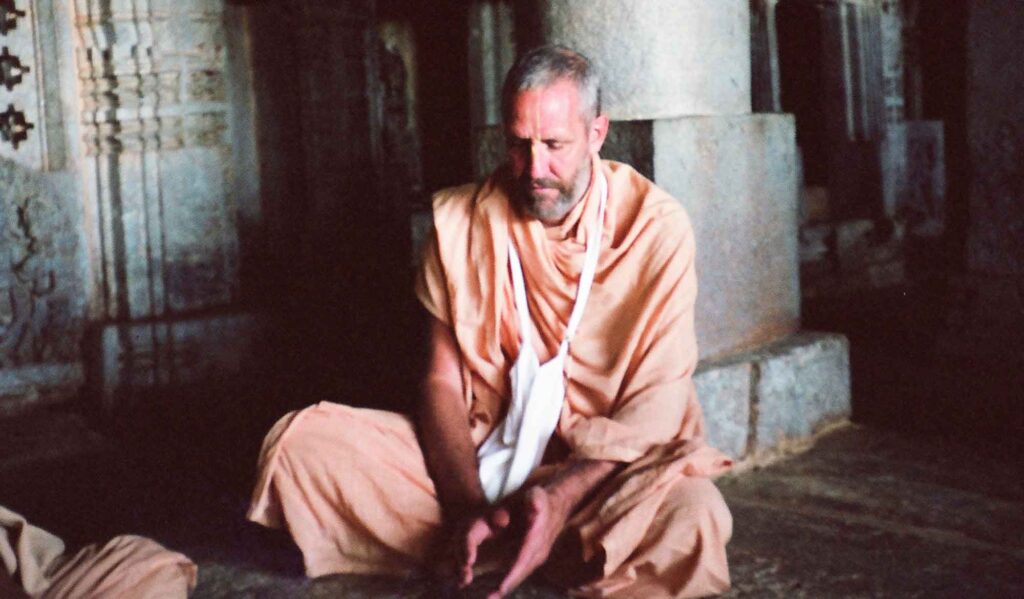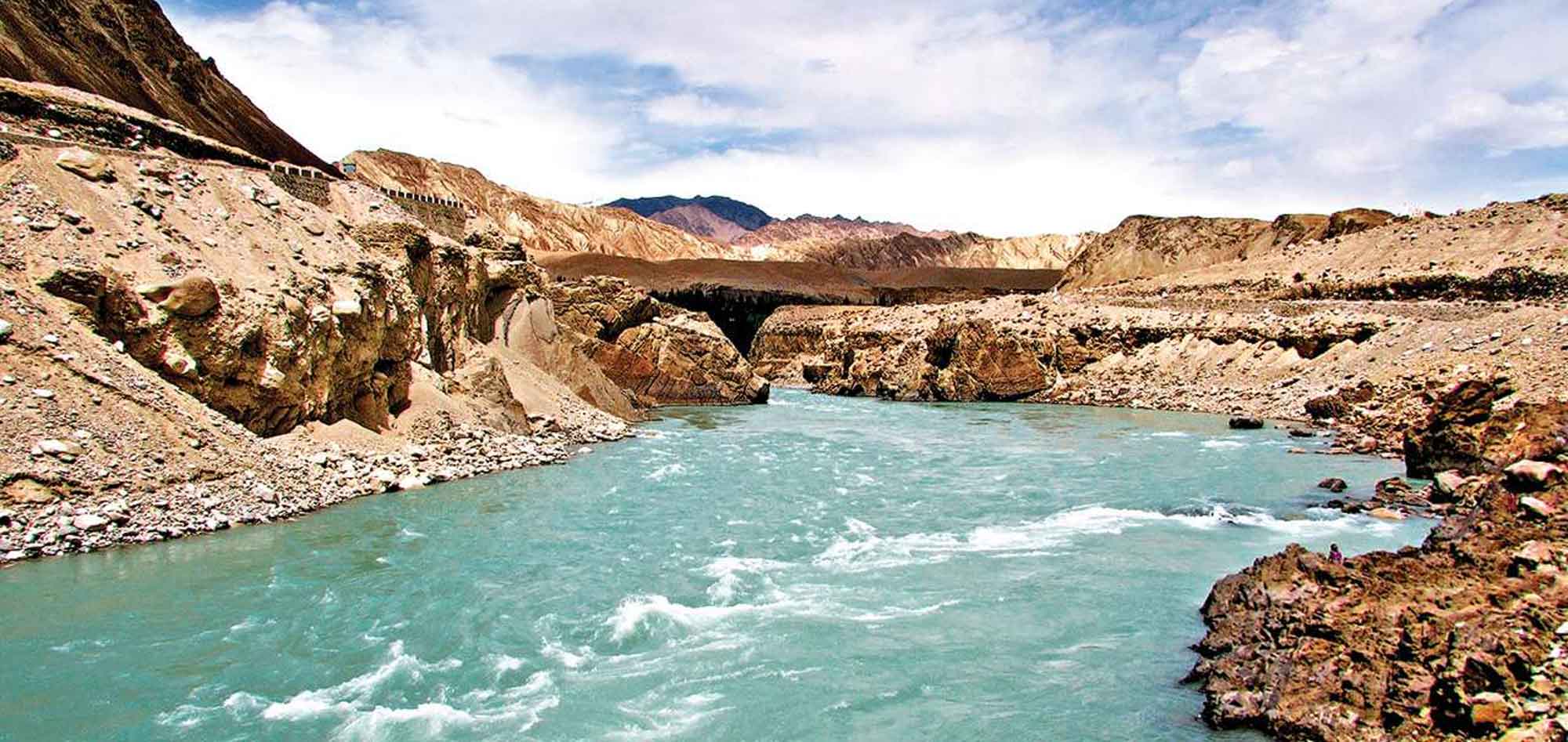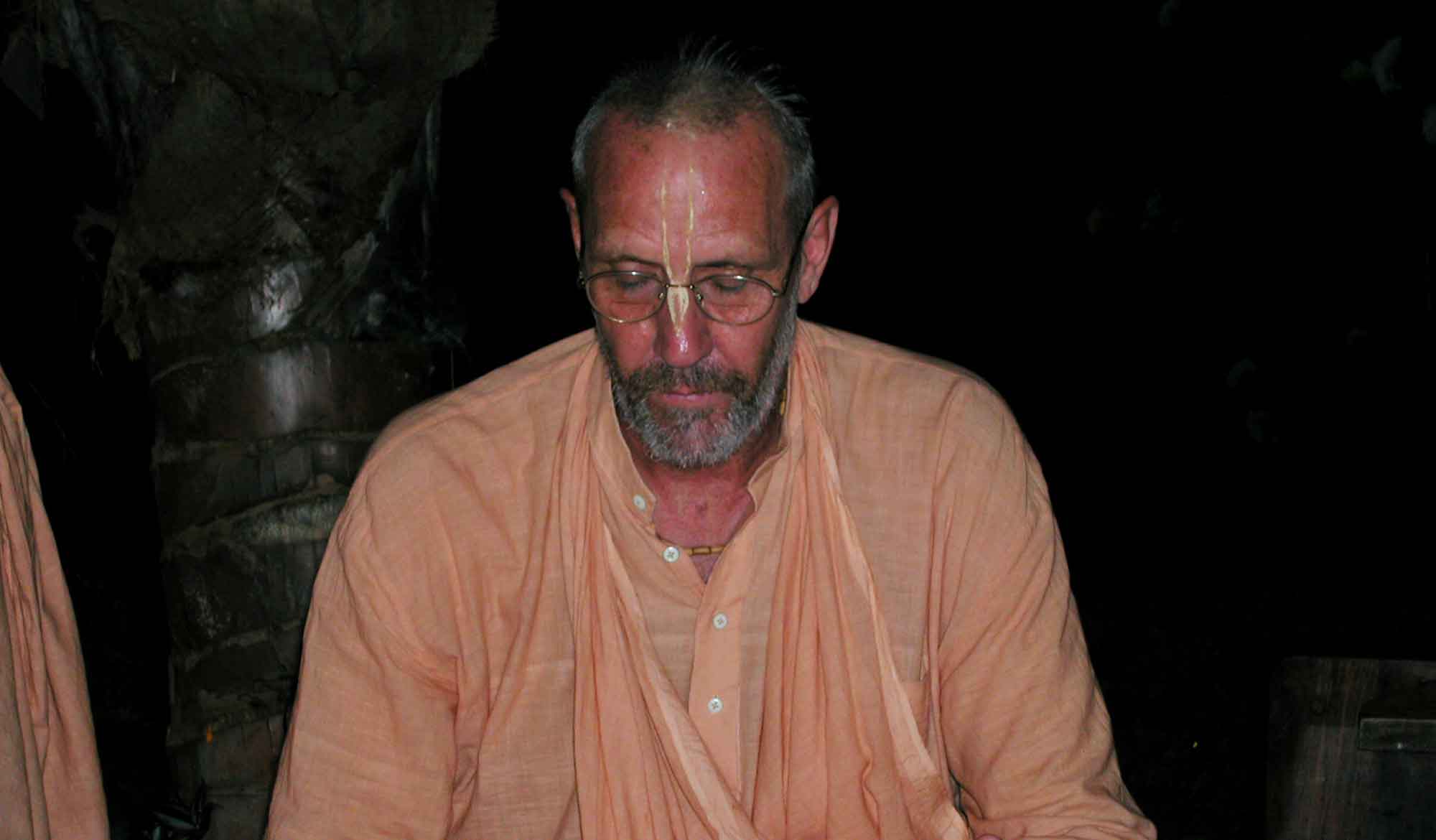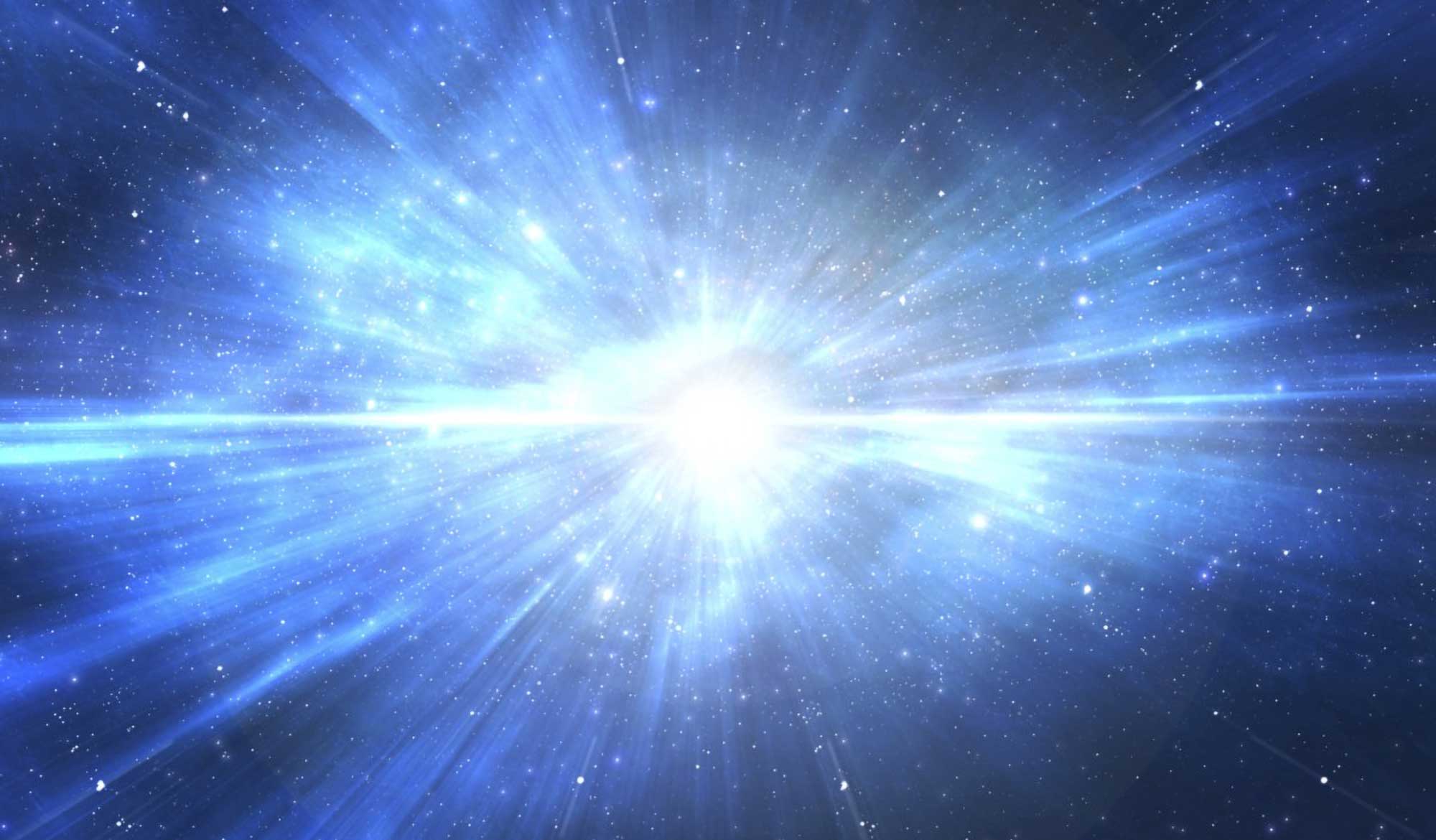by Swami B.G. Narasingha
‘The Case of Subhadrā’, written by Śrīla Narasiṅgha Mahārāja in 2013, investigates the ontology of Subhadrā Devī - is she Yogamāyā, is she bhakti-śakti or is she both?
This article is called The Case of Subhadrā because what started off as a seemingly simple question with what would appear to be a straightforward answer, turned out to be a case study.
The initial question was, “Is Subhadrā Yogamāyā?” The answer many of us have heard is “Yes” and rightfully so. But it is not as easy as all that. A simple ‘Yes’ doesn’t work in all circumstances.
When we hear the name Subhadrā what comes to mind? Naturally one thinks of the sister of Kṛṣṇa. So what is the history of Kṛṣṇa’s sister? Where is she born? Who are her parents? What potency is she?
There is Kṛṣṇa’s sister who is born simultaneously with Kṛṣṇa in Gokula in the house of Nanda Mahārāja. There is Kṛṣṇa’s sister who marries Arjuna in Dvārakā, who was born of Rohiṇī in Mathurā, and there is Kṛṣṇa’s sister who stands between Kṛṣṇa and Balarāma on the altar in Jagannātha Purī. But are all these the same personality? Now with the help of śāstra and previous ācāryas we will examine the Case of Subhadrā.
Śrīmad Bhāgavatam, Hari-vaṁśa and Mahābhārata are three principle śāstras that mention Kṛṣṇa’s sister. Śrī Caitanya Mahāprabhu accepted Śrīmad Bhāgavatam as the amala-purāṇa (spotless purāṇa) so we will quote Bhāgavatam first.
bhagavān api viśvātmā viditvā kaṁsajaṁ bhayam
yadūnāṁ nija-nāthānāṁ yogamāyāṁ samādiśat
“To protect the fearful Yadus from Kaṁsa’s attack, the Supreme Soul of all, ordered Yogamāyā as follows.” (Bhāg.10.2.6)
gaccha devi vrajaṁ bhadre gopa-gobhir alaṅkṛtam
rohiṇī vasudevasya bhāryāste nanda-gokule
anyāś ca kaṁsa-saṁvignā vivareṣu vasanti hi
“O My auspicious potency, who are worshipable for the entire world and whose nature is to bestow good fortune upon all living entities, go to Vraja, where there live many cowherd men and their wives. In that very beautiful land, where many cows reside, Rohiṇī, the wife of Vasudeva, is living at the home of Nanda Mahārāja. Other wives of Vasudeva are also living there incognito because of fear of Kaṁsa. Please go there.” (Bhāg. 10.2.7)
devakyā jaṭhare garbhaṁ śeṣākhyaṁ dhāma māmakam
tat sannikṛṣya rohiṇyā udare sanniveśaya
“Within the womb of Devakī is My partial plenary expansion known as Saṅkarṣaṇa or Śeṣa. Without difficulty, transfer Him into the womb of Rohiṇī.” (Bhāg. 10.2.8)
athāham aṁśa-bhāgena devakyāḥ putratāṁ śubhe
prāpsyāmi tvaṁ yaśodāyāṁ nanda-patnyāṁ bhaviṣyasi
“O all-auspicious Yogamāyā, I shall then appear with My full six opulences as the son of Devakī, and you will appear as the daughter of mother Yaśodā, the queen of Mahārāja Nanda.” (Bhāg. 10.2.9)
arciṣyanti manuśyās tvāṁ sarva-kāma-vareśvarīm
dhūpopahāra-balibhiḥ sarva-kāma-vara-pradām
“By sacrifices of animals, ordinary human beings will worship you gorgeously, with various paraphernalia, because you are supreme in fulfilling the material desires of everyone.” (Bhāg. 10.2.10)
nāmadheyāni kurvanti sthānāni ca narā bhuvi
durgeti bhadrakālīti vijayā vaiṣṇavīti ca
kumudā caṇḍikā kṛṣṇā mādhavī kanyaketi ca
māyā nārāyaṇīśānī śāradety ambiketi ca
“In different places on the surface of the earth, people will give you different names, such as Durgā, Bhadra-Kālī, Vijayā, Vaiṣṇavī, Kumudā, Caṇḍikā, Kṛṣṇā, Mādhavī, Kanyaka, Māyā, Nārāyaṇī, Īśānī, Śāradā and Ambikā.” (Bhāg. 10.2.11)
Above, Śrīmad Bhāgavatam says that the daughter that was born to Nanda and Yaśodā was indeed Yogamāyā, but she is not known as Subhadrā. The word bhadra used in verse 10.2.7 means auspicious. In verse 10.2.11 Kṛṣṇa says that in the material world, His Yogamāyā potency will be known as Durgā, Bhadra-Kālī, Vijayā, Vaiṣṇavī, etc, but again Subhadrā is not mentioned.
In his Sārārtha-darśini commentary to verse 10.2.10 Śrī Viśvanātha Cakravartī says:
“You’re aṁśa, material māyā, will be taken by Vasudeva to cheat Kaṁsa. You will be worshipped in various forms at the Vindhya Hills and other places. All men will worship you because you are the supreme goddess of those who have all types of material desires.”
It seems clear that the daughter born to Yaśodā was indeed Yogamāyā, but that the female child that Vasudeva took to the palace dungeon of Kaṁsa was Mahāmāyā, the external potency of Kṛṣṇa. In neither instance is she known as Subhadrā. Hari-vaṁśa says as follows:
lebhe jyeṣṭhaṁ sutaṁ rāmaṁ sāraṇaṁ śaṭham eva ca
durdamaṁ damanaṁ śvabhraṁ piṇḍārakam uśīnaram
citrāṁ nāma kumārīṁ ca rohiṇī tanayā daśa
citrā subhadreti punar-vikhyātā kuru-nandana
“Vasudeva begot his eldest son Rāma (Balarāma) in Rohiṇī; and their other sons are: Sāraṇa, Śaṭha, Durdama, Damana, Śvabhra, Piṇḍāraka, and Uśīnara; O descendant of Kuru, they also had a daughter by the name of Citrā, who is renowned by the name of Subhadrā.” (1.35.5-6)
Mahābhārata says as follows:
mamaiśā bhaginī pārtha sāraṇasya sahodarā
yadi te vartate buddhirvakṣyāmi pitaraṁ svayam
“This is my sister, O Pārtha, and born of the same mother as Sāraṇa (this refers to Rohiṇī, the mother of Sāraṇa). May you be blessed. She is the favourite daughter of my father.” (Ādi-parva 221.17)
Hari-vaṁśa mentions Kṛṣṇa’s sister as being Subhadrā and Mahabharata mentions Kṛṣṇa’s sister as being born of Rohiṇī. Both these references are to Kṛṣṇa’s sister born in Mathurā to Vasudeva and Rohiṇī who later married Arjuna in Dvārakā, not to the twin of Kṛṣṇa born to Yaśodā and later taken to the dungeon of Kaṁsa.
From previous ācāryas we have quotes regarding Subhadrā, some stating that she is Yogamāyā, some that she is Mahāmāyā and some that she is bhakti-svarūpa. The exercise is in how to harmonize the statements of different ācāryas. Some quotes from A.C. Bhaktivedānta Swami Prabhupāda are as follows:
“Subhadrā is Yogamāyā. The spiritual energy is called Yogamāyā. And she had 16 different expansions. Out of these 16 expansions, Subhadrā is one. The Mahāmāyā of the material energy is also expansion of the energy of Yogamāyā; and both Yogamāyā and Mahāmāyā are equally important to Kṛṣṇa as much as any government department is equally important for functioning the government”. (Letter to Madhusūdana – Montreal 29th July 1968)
“Regarding your question about Subhadrā and Durga, they are not at all the same. Durga’s other name is Bhadrā, not Subhadrā, and Durga’s activities are within the material world. Subhadrā does not work as Durga. Subhadrā is internal energy, and Durga is external energy. As energy they have a relationship as much as we are energies of Kṛṣṇa, but the energies are working in different capacities.” (Letter to Haṁsadūta – LA, 9th Feb.1969)
“Regarding your question, ‘Is Subhadrā, Lord Kṛṣṇa’s sister, the same as Durgā or Māyā?’ the answer is that originally Kṛṣṇa’s energy is one; that is spiritual energy. But according to different functions, the Māyā is represented differently. In the material world the energy is called Bhadrā, and in the spiritual world the same Māyā is called Subhadrā. The only distinction is ‘su’ and without ‘su’. ‘Su’ means auspicious. So in the spiritual world the same Māyā works auspiciously, and in the material world the same Māyā works inauspiciously.” (Letter to Upendra – LA, 5th July 1969)
In 1872 Śrī Bhaktivinoda Ṭhākura wrote an essay for a newspaper in Cuttack, Orissa about the Deities of Jagannātha, Subhadrā and Baladeva as they are manifest in the temple at Jagannātha Purī. An excerpt follows:
“In the middle room [of the temple], there is an elevated seat on which stand four different forms, viz., Jagannātha, Balarāma, Subhadrā and Sudarśana. According to the Vedanta, God is one without a second, but He has infinite energies and attributes which are not fully known to man. But then man perceives only three energies in God, because he has no other corresponding sides to understand the other powers. From one of the energies proceeds matter in all its different forms and properties and this energy is styled the māyā-śakti of God. From the second energy proceeds all spiritual creation, in all its relations and phases. This power is entitled the jīva–śakti of God. The third energy perceivable by man is the energy of Will, which is called cit-śakti. God moving in creation is what is meant by this infinite energy. Jagannātha is the emblem of God having no other form than the eyes and the hands. They mean to show that God sees and knows and creates. Balarāma is jīva-śakti of God; Subhadrā is the māyā-śakti and Sudarśana is the energy of will.” (The Temple of Jagannātha at Puri, 1872)
Before bringing this article to a conclusion we shall also quote from the archives of the ācārya, Swami B.R. Śrīdhara Deva Gosvāmī Mahārāja as follows:
“Subhadrā-devī represents the līlā of Kṛṣṇa. She is there in Dvārakā. She has got no administrative function. Subhadrā is not Yogamāyā. Subhadrā has got no mundane function. She is there in dvārakā–līlā of Kṛṣṇa.”
“Subhadrā-devī has been said to be the representation of bhakti in general, devotion. Balarāma, Jagannātha, Subhadrā. Guru, bhakti and Kṛṣṇa — the ultimate end, the devotional process and Baladeva as guru to help. Subhadrā – bhakti-svarūpa. Not śakti or other svarūpa. Subhadrā was not in Vṛndāvana, she was born in Mathurā.”
From our previous Gauḍīya Vaiṣṇava ācāryas we have three opinions on the ontological position of Subhadrā. Prabhupāda says she is Yogamāyā. Bhaktivinoda says she is Mahāmāyā. And Śrīdhara Mahārāja says she is bhakti-svarūpa. How to harmonize?
Subhadrā is Yogamāyā when she appears in Gokula and she is Mahāmāyā when she is taken to the dungeon of Kaṁsa in Mathurā. Prabhupāda is referring to Subhadrā in Gokula and Bhaktivinoda is referring to her capacity in Mathurā.
After chastising Kaṁsa in her multi-armed form while in the dungeon in Mathurā, that supremely wonderful Goddess (Mahāmāyā) left that place to go to the Vindhyā Hills to be worshiped in the forms of Durgā, Bhadra-Kālī, etc. Hence, she did not return as such to take part in the līlā of Kṛṣṇa.
Śrīdhara Mahārāja calls the Subhadrā born of Vasudeva and Rohiṇī in Mathurā, after Kṛṣṇa had killed Kaṁsa, bhakti-svarūpa. This refers to Subhadrā not only as a śakti, Yogamāyā, but as bhakti–svarūpa indicating that Subhadrā not only manifests as Yogamāyā acting merely as a facilitator of the devotional service to Kṛṣṇa, but she herself is also bhakti-svarūpa — a personification of pure loving devotion to her brothers Kṛṣṇa and Balarāma. Thus Subhadrā is there on the altar with Kṛṣṇa and Balarāma in Jagannātha Purī. She is sometimes considered as Yogamāyā, Mahāmāyā or bhakti–svarūpa.
In some instances, Devaki is called the mother of Subhadrā, but this is due to her being a co-wife of Vasudeva along with Rohiṇī and others. Although the biological mother of Subhadrā was Rohiṇī, she is taken to be the sister of Kṛṣṇa in the same way that Balarāma (also born of Rohiṇī) is taken to be Kṛṣṇa’s brother.
Ultimately, the internal energy of Kṛṣṇa is one, which manifests as many according to the Lord’s will and the requirement of His līlā (acintya-bhedābheda). It has also been noted that the use of the word ’yogamāyā’ in the vocabulary of the ācāryas is interchangeable with the word ‘maha-māyā’. Accordingly, the sister of Kṛṣṇa is one-energy manifesting as different personalities (Yogamāyā, Mahāmāyā and bhakti-svarūpa) according to the required service.
More Articles by Swami B.G. Narasingha
The Sacred River Sindhu/Indus
‘The Sacred River Sindhu/Indus’ was posted by Swami B.G. Narasingha on his blog, narasingha.net, on October 2nd, 2011. In this short article, Narasingha Maharaja explains the significance of the River Sindhu and his pilgrimage to it. This article was later expanded into a bigger article called ‘Sindhu River – How India Got Her Name.’
Instructing the Guru
This article “Instructing the Guru” was written in April 2018 by Śrīla Narasingha Mahārāja who answers a question concerning a previous article wherein a Vaiṣṇavī writes a letter to her dīkṣā-guru and explains to him about the importance of śikṣā. In response, a question was raised by a devotee about the etiquette of a disciple instructing her guru.
The Atomic Ray – From Uniform Consciousness to Individual Conscious Units
In “The Atomic Ray - From Uniform Consciousness to Individual Conscious Units” written in 1996 Śrīla Narasiṅgha Mahārāja discusses the constitutional position of the jīva, according to Bhaktivinoda Ṭhākura and Śrī Caitanya-caritāmṛta.













